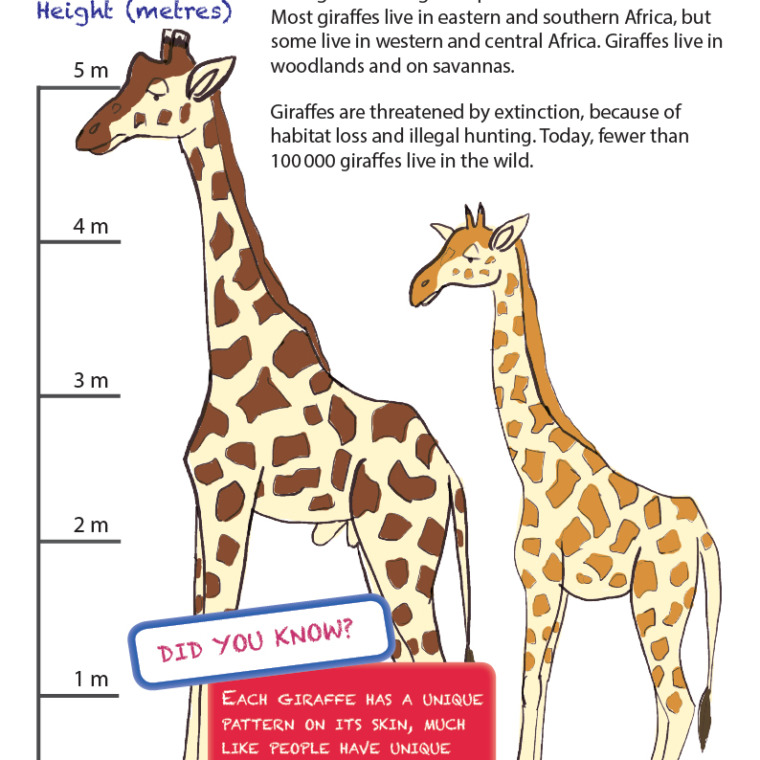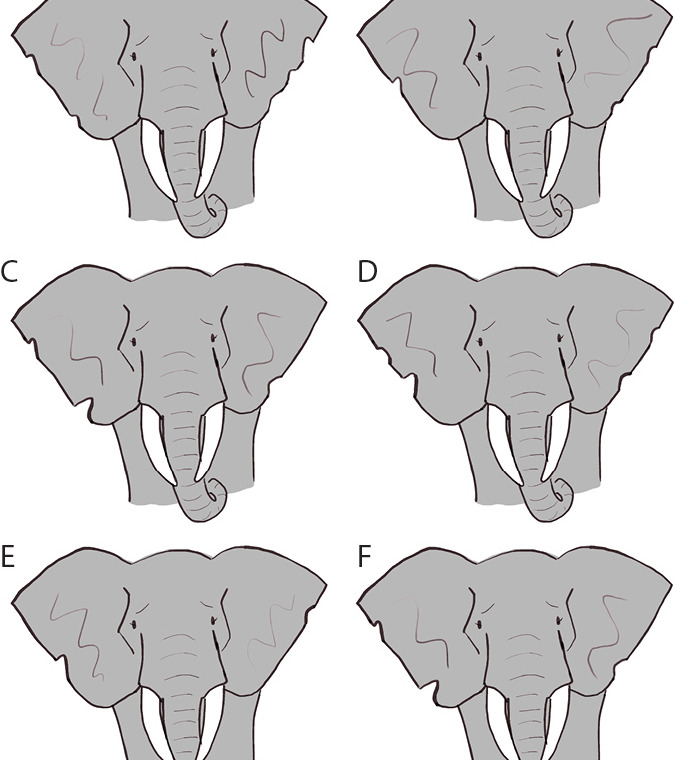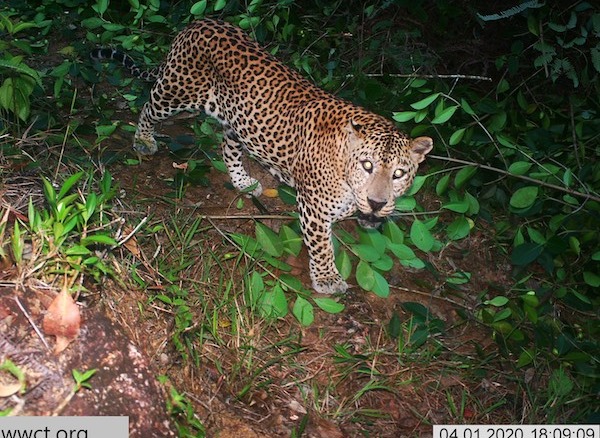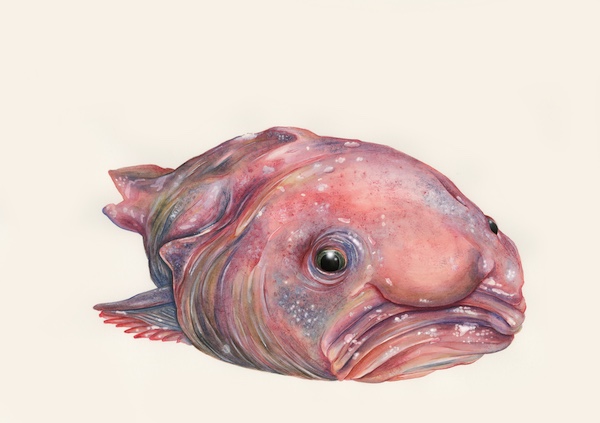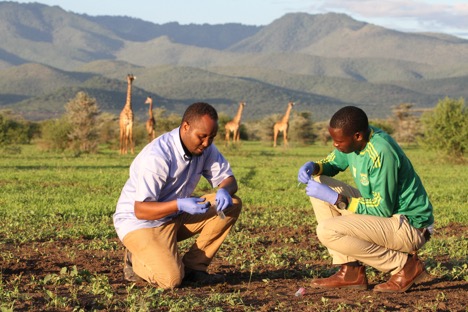A chat with
Monica Bond
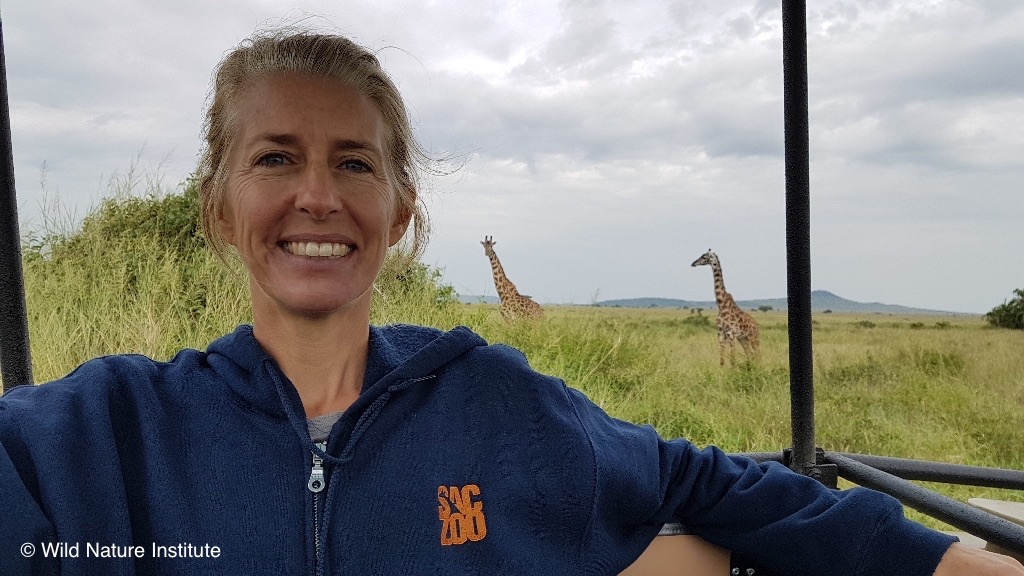
Monica Bond is a scientist and co-founder of the Wild Nature Institute (WNI). The team at WNI are committed to science, education, and action to protect biodiversity. They maintain a long-term giraffe research project in Tanzania, collecting all sorts of fascinating information on the world’s tallest animal. Doug Beetle was created as part of a WNI education initiative.
What questions are you trying to answer with your research?
Monica: My organization the Wild Nature Institute is seeking to discover where giraffes are doing well and where they are not doing well, and why. Doing well means surviving a long time and having lots of healthy babies. This is needed so we can figure out what we can do to help giraffes. We want to understand how giraffes and people can live together in harmony.
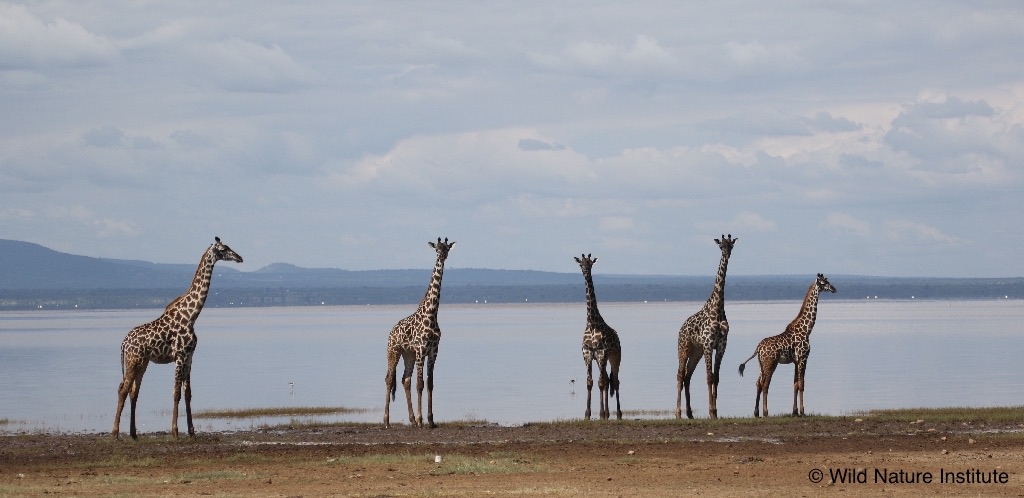
Why do you think this is interesting or important?
Monica: Giraffes are loved by many people all over the world, but like lots of large animals they are growing more endangered because there are too many people moving into places that giraffes need to live. Because giraffes are so big, they need a lot of space and they don’t like to live so close to people. Therefore if we can preserve enough trees and space for giraffes to do well, then this will also provide a lot of space for other, smaller animals that share the giraffe’s habitats.
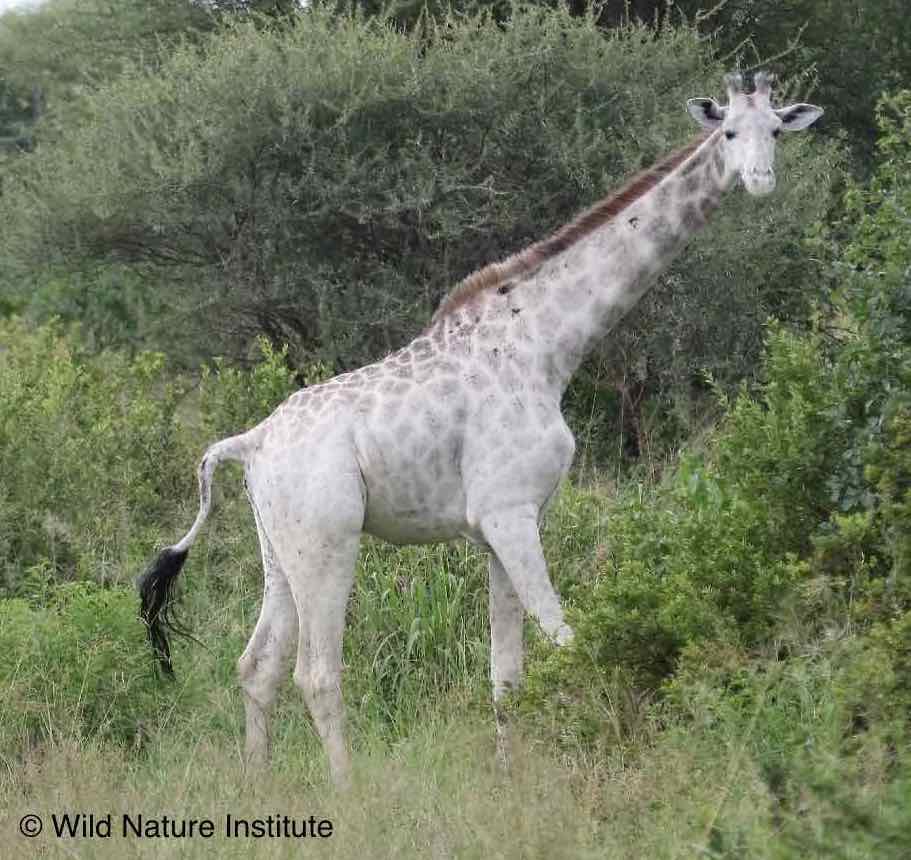
How do you carry out your giraffe research?
Monica: We are using a really cool computer program that can tell us the identify of each individual giraffe based on its spot pattern of the fur!
Every single giraffe in the world has its own unique pattern of spots. We take a picture of the giraffe’s spots and use that computer program to see if we have seen a giraffe with that same pattern – that means it is the same giraffe!
We record when and where we see each giraffe, whether a mother has a baby, and how many friends does each giraffe have. By finding and recording giraffes over and over again for many years, we can see how long they live and where they move around.
Then, we can study whether lion predation, or the food they are eating, or diseases and parasites they might have, or how close they live to people, affect where they move, how long they live, and how many babies they have. We are even studying how the type of spots they have might influence how well they survive!
How do you hope your work will help people better understand and conserve giraffes?
Monica: We share the information we are learning about giraffes to help people understand what hurts them and what harms them.
For example, we found that too many houses and farms is bad for giraffes because it forces them to move longer distances to find food, and giraffes nearer to towns seem to die more quickly probably because some of those people kill giraffes to eat. But we did not see this problem with giraffes that lived close to indigenous people who still live the way they did hundreds of years ago.
These indigenous people live in huts made of mud and grass and they don’t plant farms or kill giraffes to eat. In fact, we think giraffe mothers actually bring their babies closer to these people because the people keep away the predators like lions and hyenas. The giraffe babies survive better that way!
We have learned that modern people and lifestyles are harming giraffes, but indigenous people and giraffes are living together in harmony. We advise the indigenous people that not cutting down too many trees and not disturbing the giraffes that live near them will help giraffes do even better.

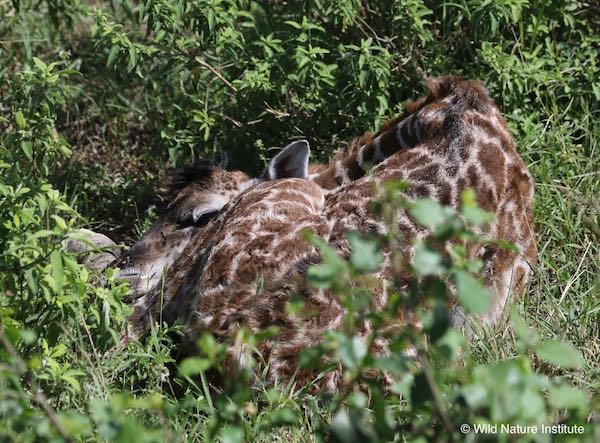
What would you like people to know about giraffes that they may not know already?
Monica: Right now we are studying why giraffes have such interesting and unusual spots. Can you think of any other mammal – animals with fur – that has spots like a giraffe? They are really unusual!
So we want to know if the spots help camouflage the babies from predators, or help giraffes identify each other – like people’s unique faces – or maybe even help regulate their body temperature.
We are also really interested in learning who the fathers of the baby giraffes are. There is no way to know which male giraffe is the father of the babies just by watching their behavior, so we are figuring out the family relationships by getting DNA from their poop.
Then with the DNA you can figure out who is the dad and who is the mom. So we can see, is just one male the dad of lots of babies, or are there a lot of dads? This would be really interesting to know, because we think the biggest, strongest male gets to be the dad – but maybe that is not always true.
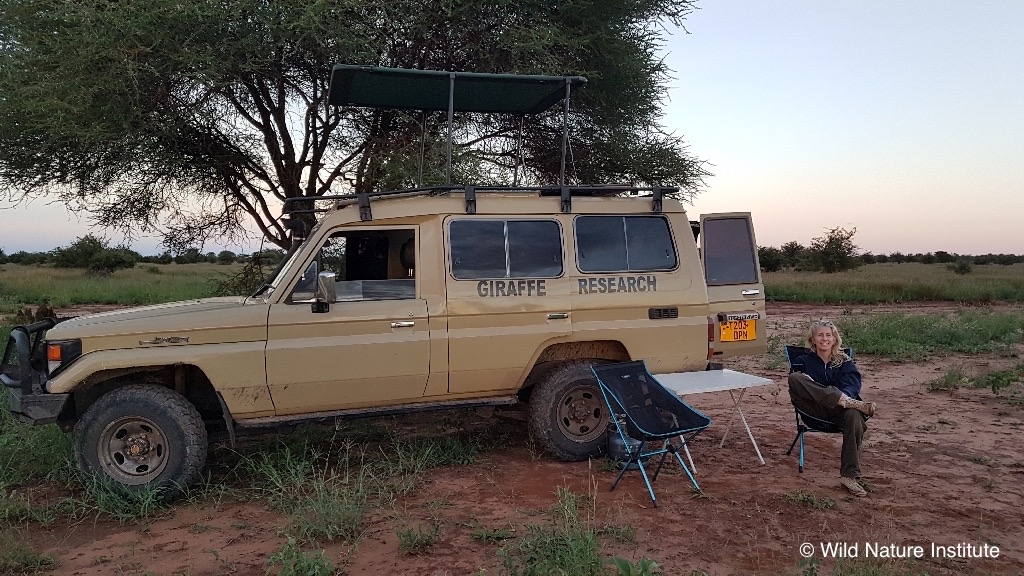

How did you become interested in giraffes?
Monica: I absolutely adore every single animal on Earth. But…I visited Africa for the first time 15 years ago and I just dearly loved giraffes from the first moment I laid eyes on one. I could not believe what a weird and wonderful animal this is.
Giraffes look like an impossible creature, like an alien from outer space. My friend John Doherty said they are as impossible as a unicorn, and I agree. So I wanted to learn all about them and try to save them from extinction because they are so beautiful and special.
What advice do you have for young people who are interested in doing something similar to what you do?
Monica: Always be curious about the world around you. Carefully look at the animals and watch what they are doing. Then ask yourself, why do they look like that? Why are they doing that? And what kinds of things might cause them to look like that or behave that way?
Then you can use the scientific method to figure out how to answer your question. This is what makes a scientist out of a naturalist. A naturalist learns a lot about nature from what is already known or what they observe, but a scientist takes this a step further and uses a logical process to test ideas and answer “why?”
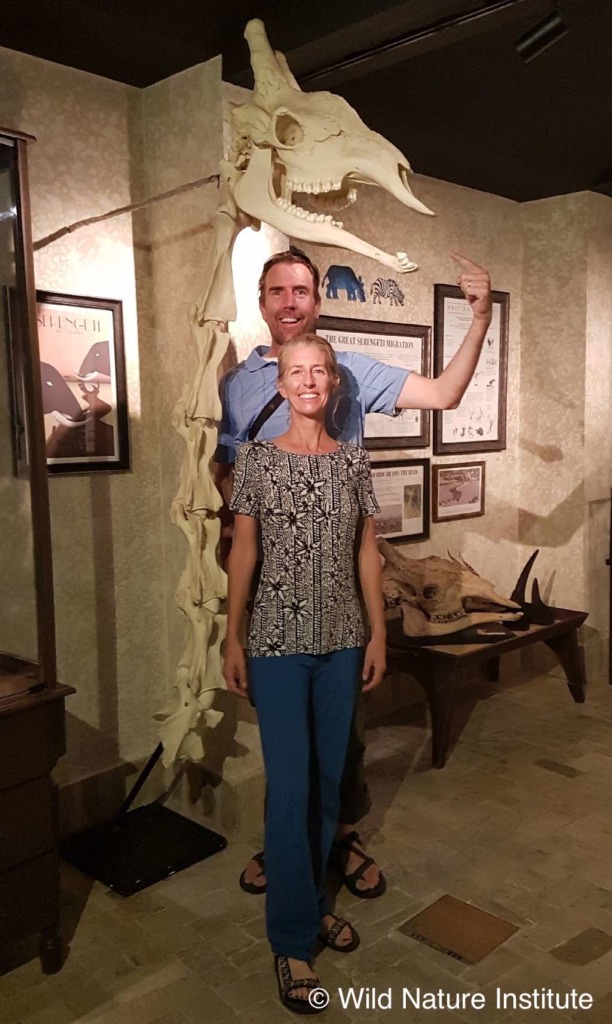
View Wild Nature Institute's
Education Resources
Giraffe Activities
Repurpose items from home to make this fun craft!
Find the differences between the pictures.
Have some fun! Learn how to draw these three large African mammals: From Nature’s Giants magazine, courtesy of Wild Nature Institute. Illustrator: Kayla Harren.


